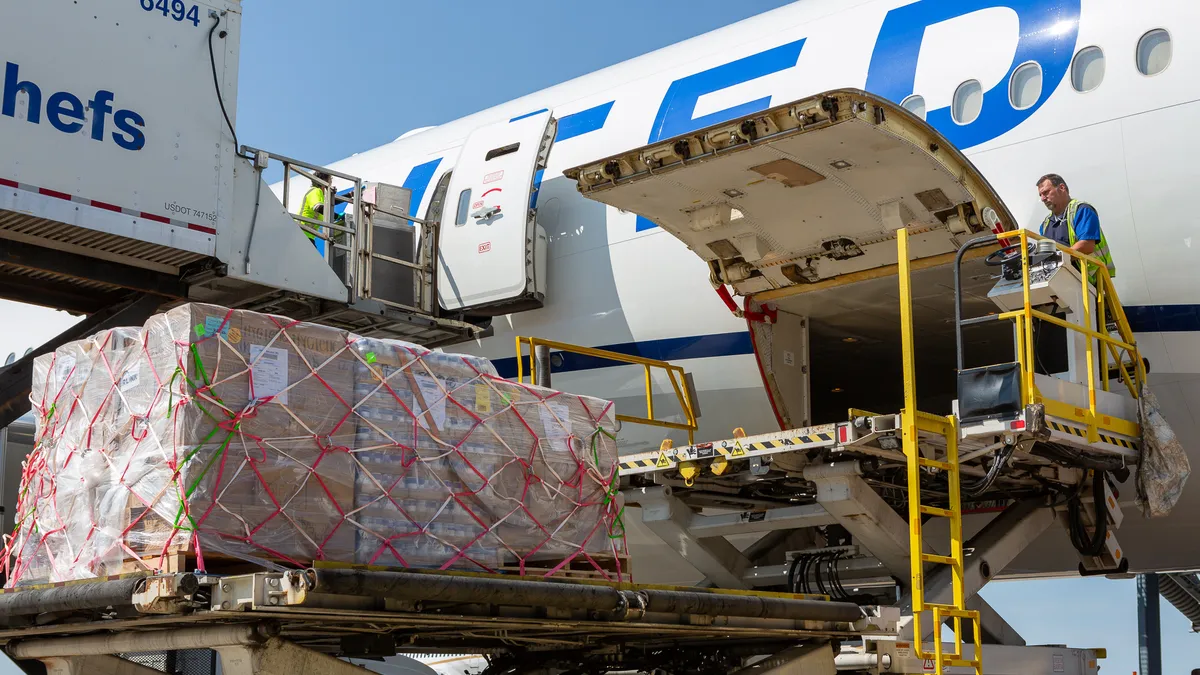Dive Brief:
- The cost of logistics in the U.S. grew by 11.4% to reach $1.64 trillion, according to the newly released State of Logistics report from the Council of Supply Chain Management Professionals (CSCMP), A.T. Kearney and Penske. The report cited a "booming economy" for the increased spending.
- January 2019 marked the 100th month in a row in which employment increased and businesses have had to respond with higher wages. This was especially felt by the trucking and warehousing sectors, which reported higher labor costs in 2018 and passed those costs on to shippers, according to the report. This, along with tight capacity, meant shippers paid more for logistics services in 2018.
- "You really saw shippers, as I said, and as the report observes, have the worst year of their careers," Michael Zimmerman, a partner at A.T. Kearney and an author of the report, told Supply Chain Dive. Shippers were "scrambling for capacity, they were paying much higher rates, they were blowing up their budgets," Zimmerman said.
Dive Insight:
While carriers might have struggled with labor, higher freight rates benefited their bottom line. The spot freight market increased 25% from the post-holiday slump in February to the summer peak, before falling 20% to the end of the year. "This caused shippers across virtually all industries to exceed their 2018 logistics budgets," the report reads.
But it wasn't just wages leading to these higher rates. Carrier's capacity could not keep up demand as shippers sought to bolster their inventory in the face of tariffs and saw increased e-commerce traffic.
The report notes shippers dealt with this by making efforts to become a "shipper of choice." They worked to become more driver friendly, have well-managed gate processes and limit dwell times. Newer technology, "specifically access to social media-type ratings systems," allows carriers to better track shippers on these metrics and use this information during bids and "potentially fire undesirable shippers," the report notes.
"But despite all of that you still had service failures as a lack of available capacity, drivers changing or turning over in the carrier population, you know, made carriers less reliable as well," Zimmerman said. "So it's definitely a two-way street."
Across freight modes, logistics costs rose.
Parcel
Spending on parcel services increased to $105 billion in 2018 and prices in this mode were up 4.9% compared to the previous year. Carries also increased fees like residential and large package surcharges. The report forecasts that e-commerce will continue to drive growth in this area "for several years to come."
Rail
The implementation of precision scheduled railroading led to "considerable cost reduction" and a pricing environment that was favorable to carriers. This helped to improve the operating ratio at a number of the Class 1 railroads.
Water and ports
The political environment was a major factor in ocean shipping in 2018 with many shipping looking to bring in inventory before tariffs hit. As a result, rates were at some of their highest levels over the last three years despite a 5.7% increase in capacity. This was due to carriers being "disciplined in their capacity deployment, especially during peak season when they often follow through on blank sailings," the report said.
Air
Air freight rates rose 5% year-over-year on East-West lanes, according to the report.













